After our arrival in Accra we again hit the road, this time toward Kakum with Frank, a great driver, as our “new” driver for the remainder of our trip. In Jukwa near Kakum we stayed in the Rain Forest Lodge for nights 4, 5 and 6. Day 4 was mostly a travel day. We had driven from Mole to Tamale; flown from Tamale to Accra, and taken the time-consuming drive from Accra to the Rain Forest Lodge.
After we arrived at the Rain Forest Lodge in late afternoon we went looking for night birds. Twilight began about 6:00 p.m. We were done in time for dinner at the Rain Forest Lodge at 8:00. Our night birding produced an Akun Eagle Owl, our bird of the for Day 4. It was one of the few seen that day.
Day 5 around Kakum was spent walking in the morning. Don, suffering a bit from back problems and thinking of the climb up to, on and down from the Canopy Walk the next day, quit around 10 through most of the afternoon in order to rest up for the trek to the Canopy the next morning. My highlight of the morning of Day 5 was a fleeting glimpse of one of my target birds, a Green Hylia, (new family # 2, just recognized as a family by Clements in September of 2023). I got a much better view of the Green Hylia on Day 7 at Ankasa while sitting on Adam’s stool by a stream-side, as Adam and Ibrahim walked on ahead. My first view of the Green Hylia was not satisfactory, so I was very happy to see it so well on my second sighting (close and for a long time).
The hike up to the Canopy Walk on Day 6 produced a smashing view of the 3rd new family on my “Targeted Six”: the small but colorful male Rufous-sided Broadbill. It repeatedly performed its little aerial acrobatic act of sitting on a bare branch, taking a short, circular flight and landing back in the same spot. A number of years ago the Broadbills family was split into two families: One, the Asian and Grauer’s Broadbills (10 species , 9 in Asia, one of which I have seen, and 1, the Grauer’s Broadbill, in Uganda and Congo, Africa); and two, the African and Green Broadbills (6 species, 3 in Africa and 3 in Borneo and neighboring areas). What an amazing geographic dispersal of species within families.
The “highest” highlight of the trip was on this Day 6, when we spent the whole morning walking to and birding from the Canopy Walk at Kakum. Sarah Benke described the Canopy Walk well on FLICKR:
“This series of rope-style bridges brings visitors into a jungle layer that is usually reserved for birds and monkeys. Unique on the African continent, the Kakum Canopy Walk allows hikers to experience a portion of the jungle usually reserved for climbers and fliers thanks to a trail of precariously hung suspension bridges. Located in the thick tropical jungle of Kakum Naional Park, the canopy walk was actually designed by a pair of Canadian engineers and five Ghanians. Looking to increase tourism (specifically ecotourism) in the largely ignored national park the designers wanted to create a unique feature that would make the park a destination, thus an elevated trail through the canopy was devised. Opened on Earth Day in 1995, the canopy walkway consists of seven separate bridges that hang from the trees over 130 feet above the ground. Across over 1,000 feet of walkway, the bridges look as though they are constructed like a traditional rope bridge made from the materials of the forest, however, the sturdy spans are made of wire rope, aluminum, and wooden planks, and even have safety netting to keep people from plummeting off the trail.”
And from the Wings Birding Tours information on-line, this:
“At over 120 feet high the canopy walkway really is something different. It was built by a Canadian company and the locals have been trained in its maintenance. Along its course are stable viewing platforms. It is wide enough for just one person at a time, and it is best to allow the person in front of you to get over halfway to the next viewing platform before starting your walk.
All our birding was done from the platforms, which are far more stable and spacious and allowed Ibrahim to set up his telescope for better viewing. Here are some pictures featuring the Canopy Walk:
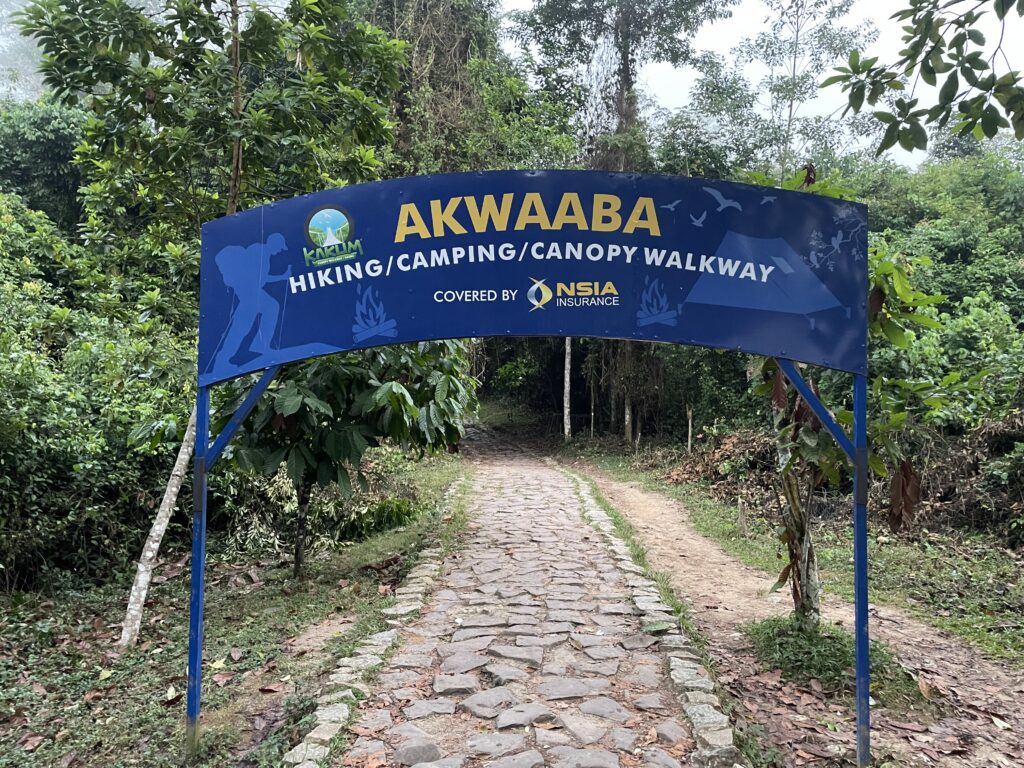
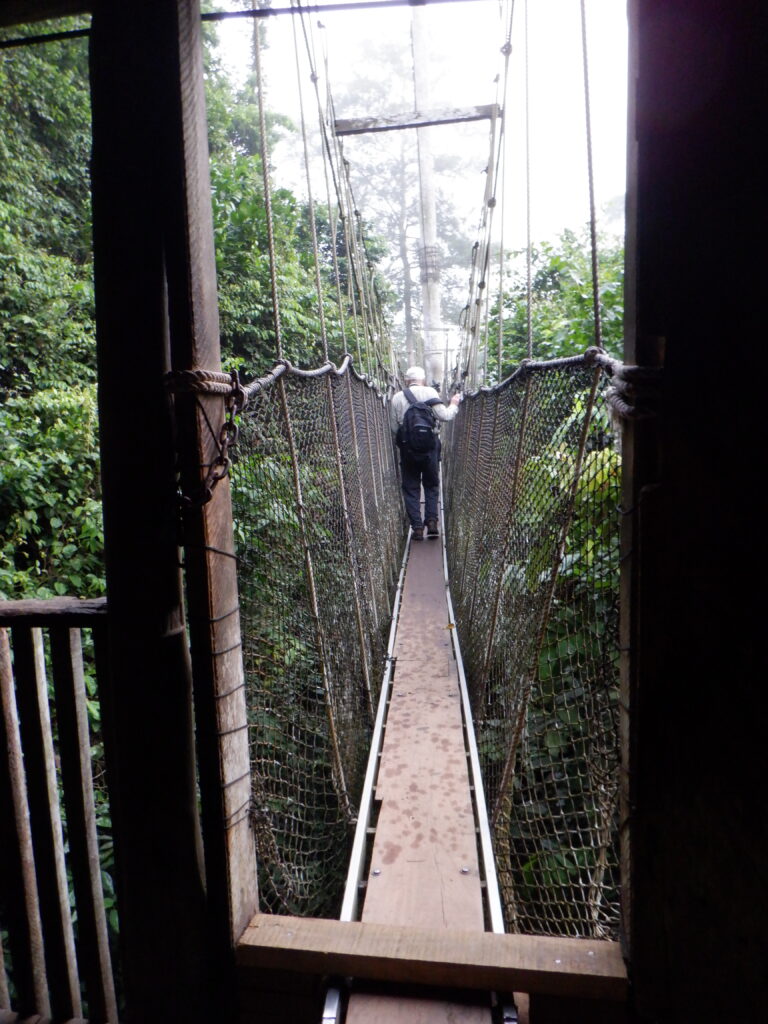

From the Canopy I saw, at a distance, a Violet-backed Hyliota ( my # 4 new family found in Ghana). Having now seen representatives of 4 of the 6 targeted families, Ibrahim’s optimism was, if possible, growing, and my pessimism disappeared. I had left only a Nicator and a Picathartes.
Not far from the Canopy a group of about 50 Lesser Spot-nosed Monkeys moved through the trees.
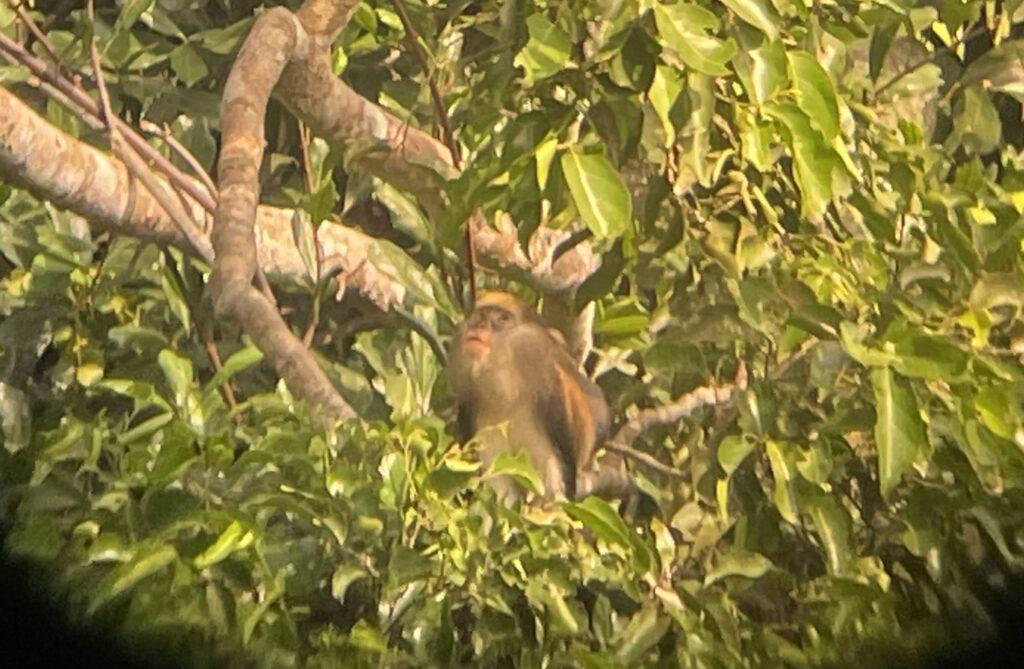
From the Canopy we saw this White-crested Hornbill
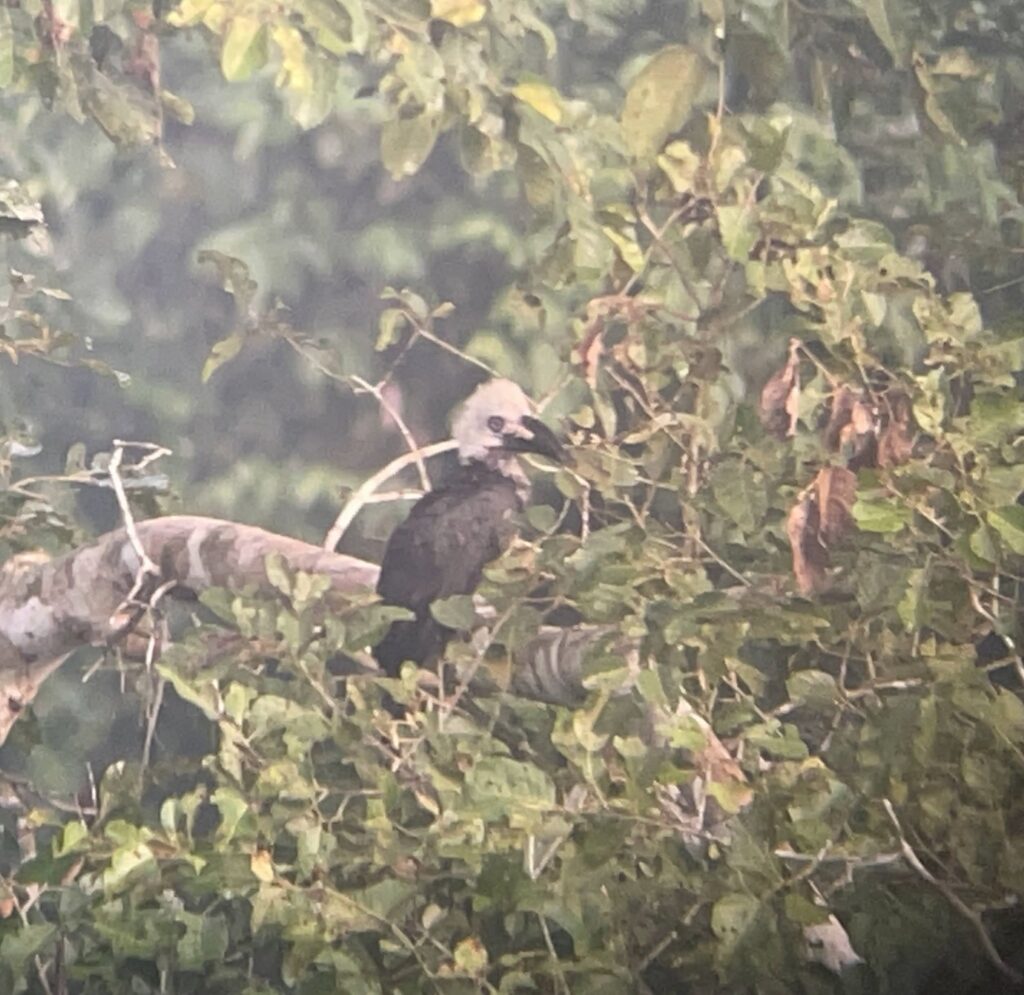
On Day 7 we drove from the Rain Forest Lodge in Jukwa to Ankasa National Park and the Ankasa Reserve Lodge, where we spent nights 7 and 8. Ankasa is about 400 kilometers from Accra. It is in the far southwest corner of Ghana (formerly named the Gold Coast) near the border with Cote d’Voire (formerly Ivory Coast). During the drive to Ankasa we saw several naturally wet areas and looked for the Hartlaub’s Duck, without success, We saw more White-faced Whistling Ducks, Long-tailed Cormorants, Great Egrets, Cattle Egrets, and, new for me, an Allen’s Gallinule, and a few others before we arrived at Ankasa.
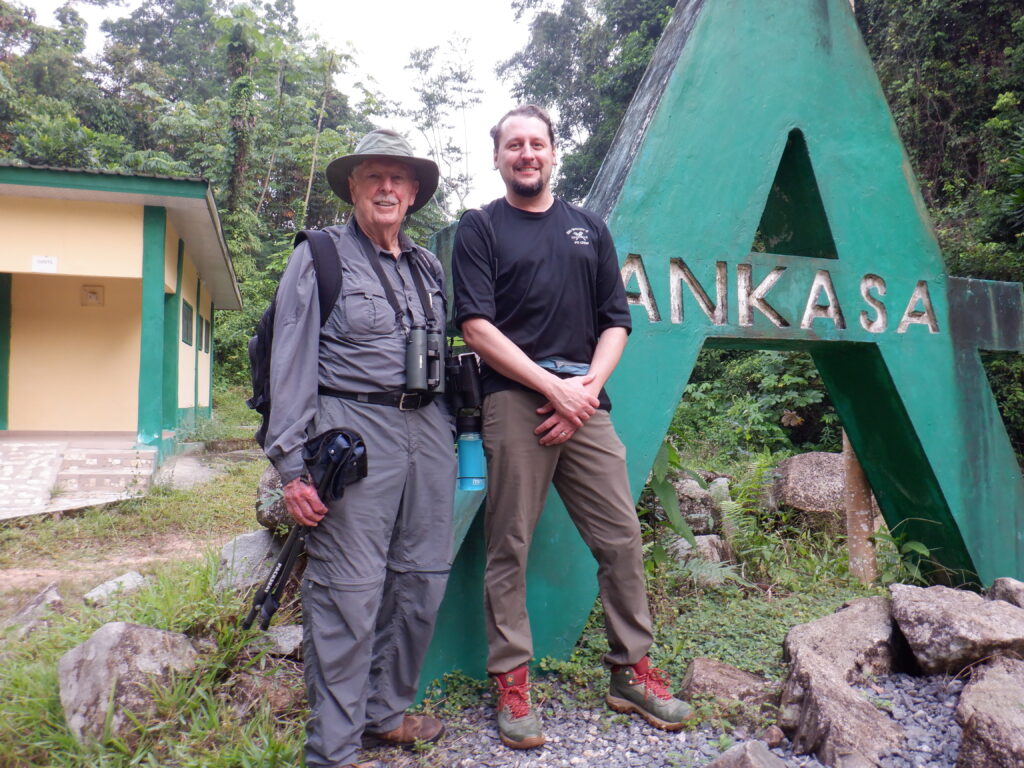
On Day 7 I was pleased to see and watch for a while another Green Hylia at close range while sitting quietly by a mostly obscured little stream, as Adam and Ibrahim forged onward on the trail. Although this viewing did not count as a new family, because I saw a Hylia briefly 2 days earlier, it was a very satisfying experience not having seen it well the first time.
I was struck by the number of species of Greenbuls that Ibrahim identified at both Kakum and Ankasa. He could identify them either by song or by sight. These mostly somber greenish-grayish nondescript birds usually seen in poor light and among lots of leaves, all looked pretty much the same to me. According to Ibrahim, the species seen were at least 9, as follows: Slender-billed, Golden, Simple (Leaflove), Red-tailed, Western Bearded, Gray, Yellow-bearded, Little, and Icterine. I have been hesitant to add any of them to my life list and probably will not, because if I were to see them again I think I would have no idea what species I was looking at.
Pretty much the same could be said about the numerous Sunbirds, although each species of Sunbird has a special beauty and distinction. The Sunbirds we recorded in Ghana, the majority of which (10), were at Kakum or Ankasa, were: Fraser’s, Little Green, Collared, Reichenbach’s, Blue-throated Brown, Olive, Buff-throated, Carmelite, Olive-bellied, and Superb. In addition we had in Ghana previously seen 3 species at Mole: Pygmy, Scarlet-chested and Beautiful. Ten of the 13 were new to me. After Ghana I have seen 30 species of Sunbirds, of which the majority were in Africa, including 2 on the island of Madagascar. Other far away places where I have seen Sunbirds are: Black, in New Britain (off the coast of Papua New Guinea); Palestine (Israel); Purple (India); Olive-backed (Papua New Guinea); Mrs. Gould’s (Bhutan); Green-tailed (India and Bhutan); Black-throated (India); and Vigor’s (India).
On our second day at Ankasa (Day 8) we started by loading into an ancient and battered four wheel drive vehicle. We entered a very wet, muddy, narrow and rutted lumber road into the forest. We were headed for some small ponds far back in the forest. But about 10 minutes into the drive we had to stop because a large tree had fallen across the trail totally obstructing our progress. At first, I was concerned that it might be an ambush of some sort. But on close inspection by our driver and Ibrahim, it became apparent that the tree fell of natural causes. But what to do? The tree was very large and we could not get around it. So we turned around and went back. We then spent a couple of hours of the morning productively seeing several excellent species, including Yellow-billed Turacos.
Day 8 also produced a nice Black Bee-eater:
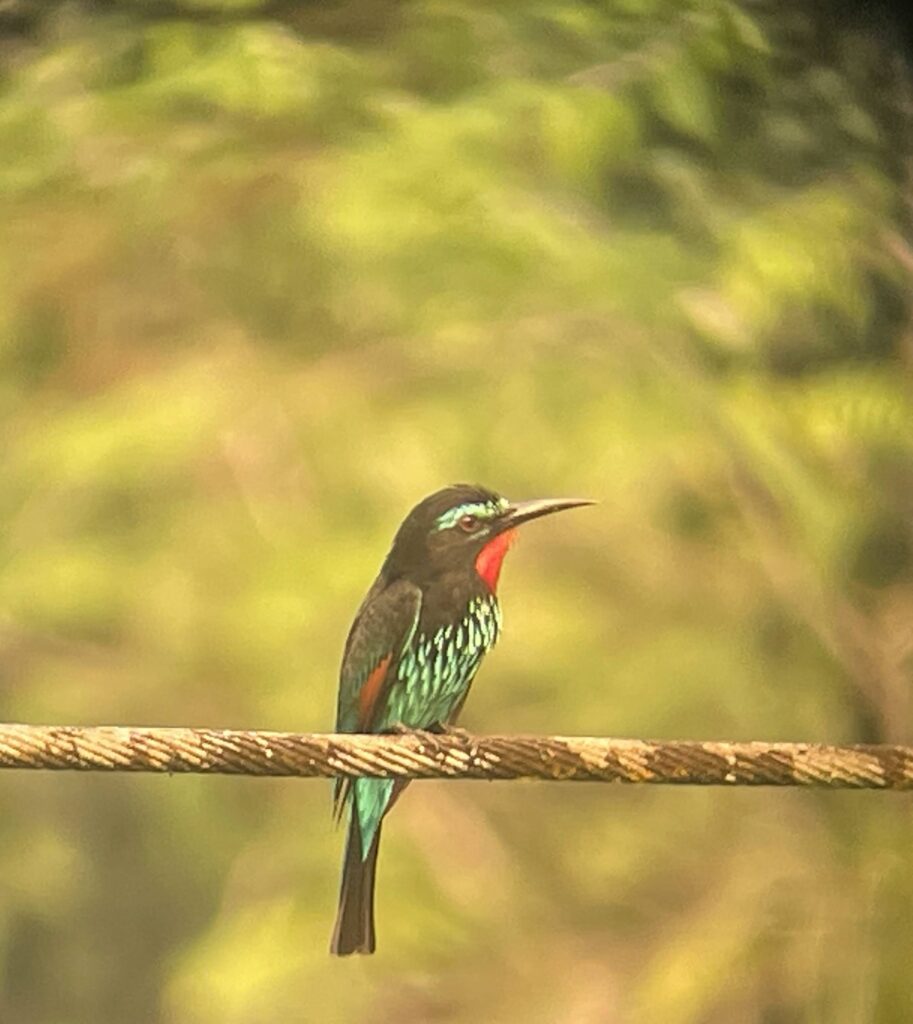
And a Yellow-throated Tinkerbird
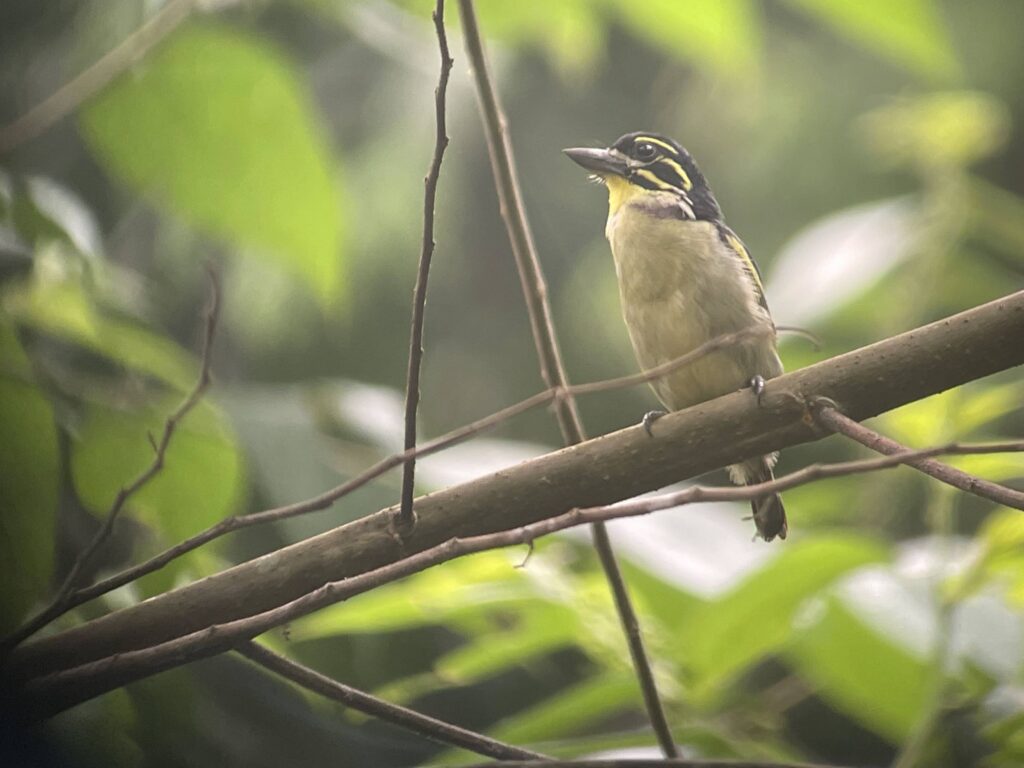
And a Chocolate-Backed Kingfisher
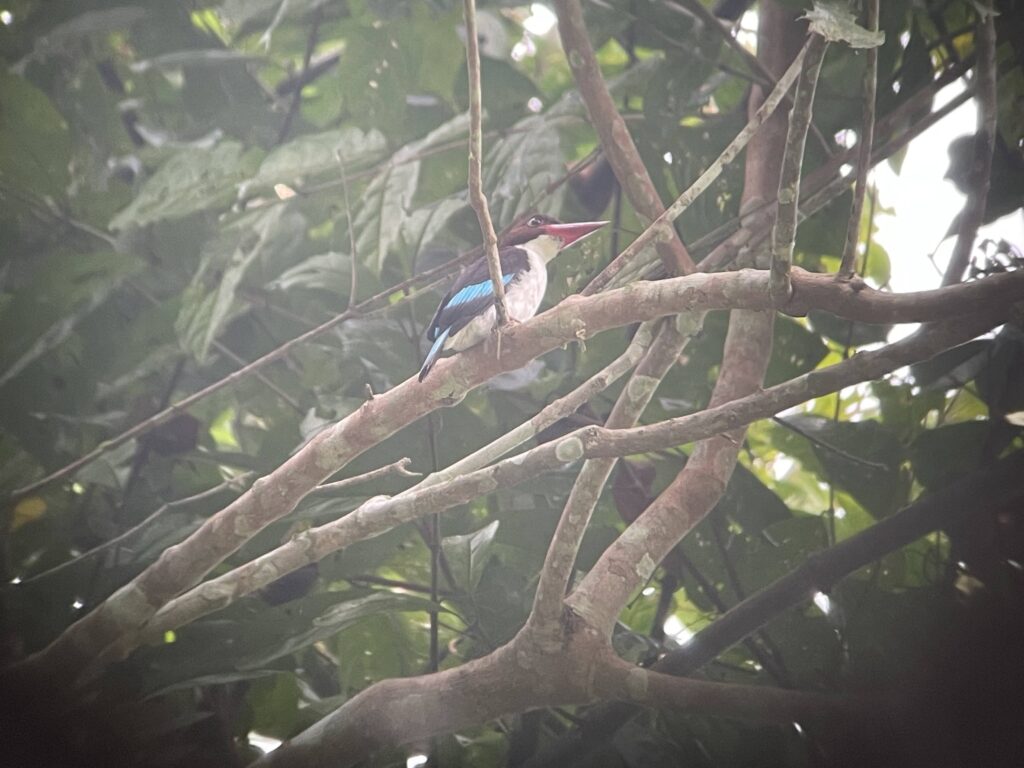
By mid-afternoon a crew had managed to clear the tree from the logging road and we began again. It is difficult to believe that any vehicle could traverse this track. But, after a long ride, and a long walk, we came to our first pond. This was followed by a further walk, as it began to grow dark, to see ponds 2 and 3. This proved, however, to be a great Kingfisher day, as we saw several species at the ponds. They included a Shining Blue Kingfisher:
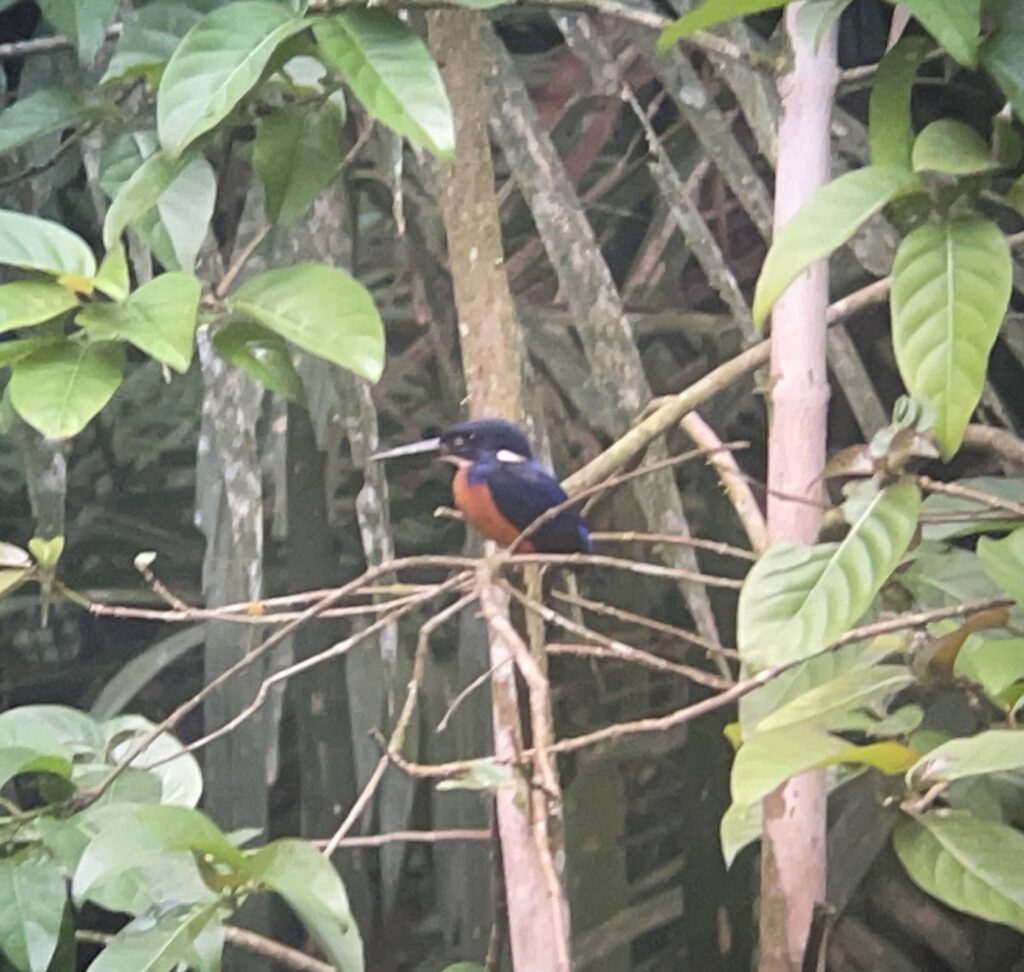
And this African Pygmy Kingfisher
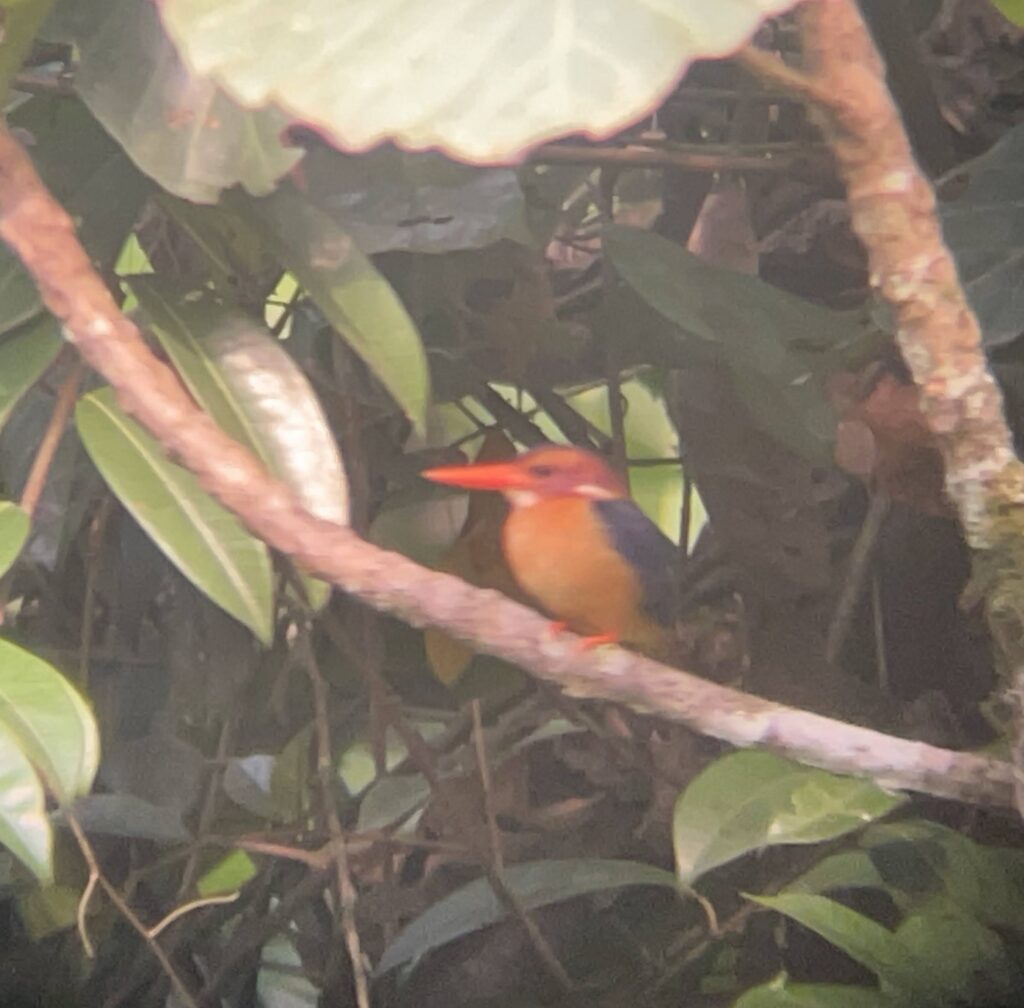
Also at the ponds we saw a White-bellied Kingfisher and an African Dwarf Kingfisher.
I was elated when I made it back to the vehicle on my own 2 legs.
